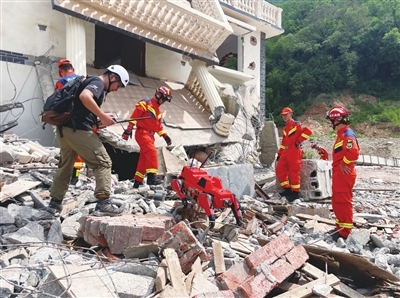
From July 8 to 10, 2025, the "Emergency Mission 2025” Earthquake Rescue Drill in Plateau and Mountainous Areas was held in Ningnan County, Liangshan Yi Autonomous Prefecture, Sichuan, China.
The drill was co-hosted by the office of the Earthquake Disaster Response Headquarters of the State Council of China, the Ministry of Emergency Management of China, and the People's Government of Sichuan Province.
Taking "Capacity Test on New Quality Rescue in Extreme Disaster Accident Scenarios" as the research topic, the drill was carried out on the basis of judging extreme scenarios, verifying practical operations and evaluating & transforming research results. 6 special topics and 20 subjects were designed focusing on extremeness, professionalism and practicality. More than 2,000 persons from various emergency rescue forces, various types of rescue aircraft and more than 400 new quality emergency equipment were mobilized to participate in the drill.
The drill has actively explored systematic application of new technologies, new equipment, new materials and new fighting methods in the emergency field. Such as collecting data of disasters in an all-round way through integrated space-air-ground detection to highlight high-altitude perception, low-altitude investigation and ground monitoring. The response and handling of disrupted transportation, communication and power were also exercised centering on construction of communication network for command centers, unmanned mechanical-assisted repair of power supply, road restoration and building of water rescue channels.
The drill of drones focused not only on application of clusters, but also coordinated command of multiple drones and expanded applications of drones in various scenarios. Aviation rescue was targeted at testing coordinated commanding of aircraft and modular delivery of rescue forces and supplies.
In addition, the drill also explored application of series new quality rescue equipment such as quadruped robots, magnetic navigation detectors, escort robots, and carbon-based organism detection radars in extreme scenarios, which are critical for key issues rescue operations often meet with.


